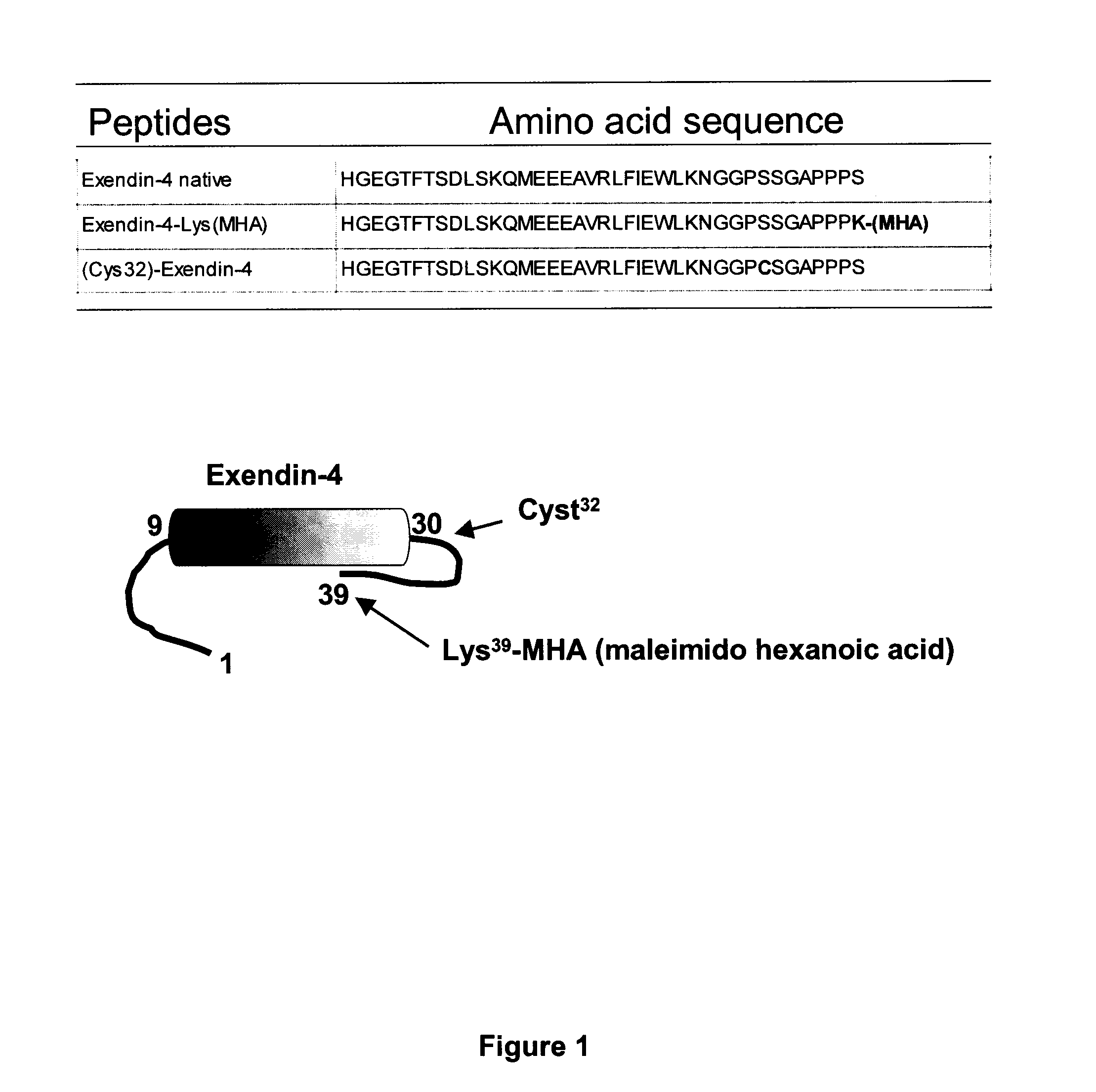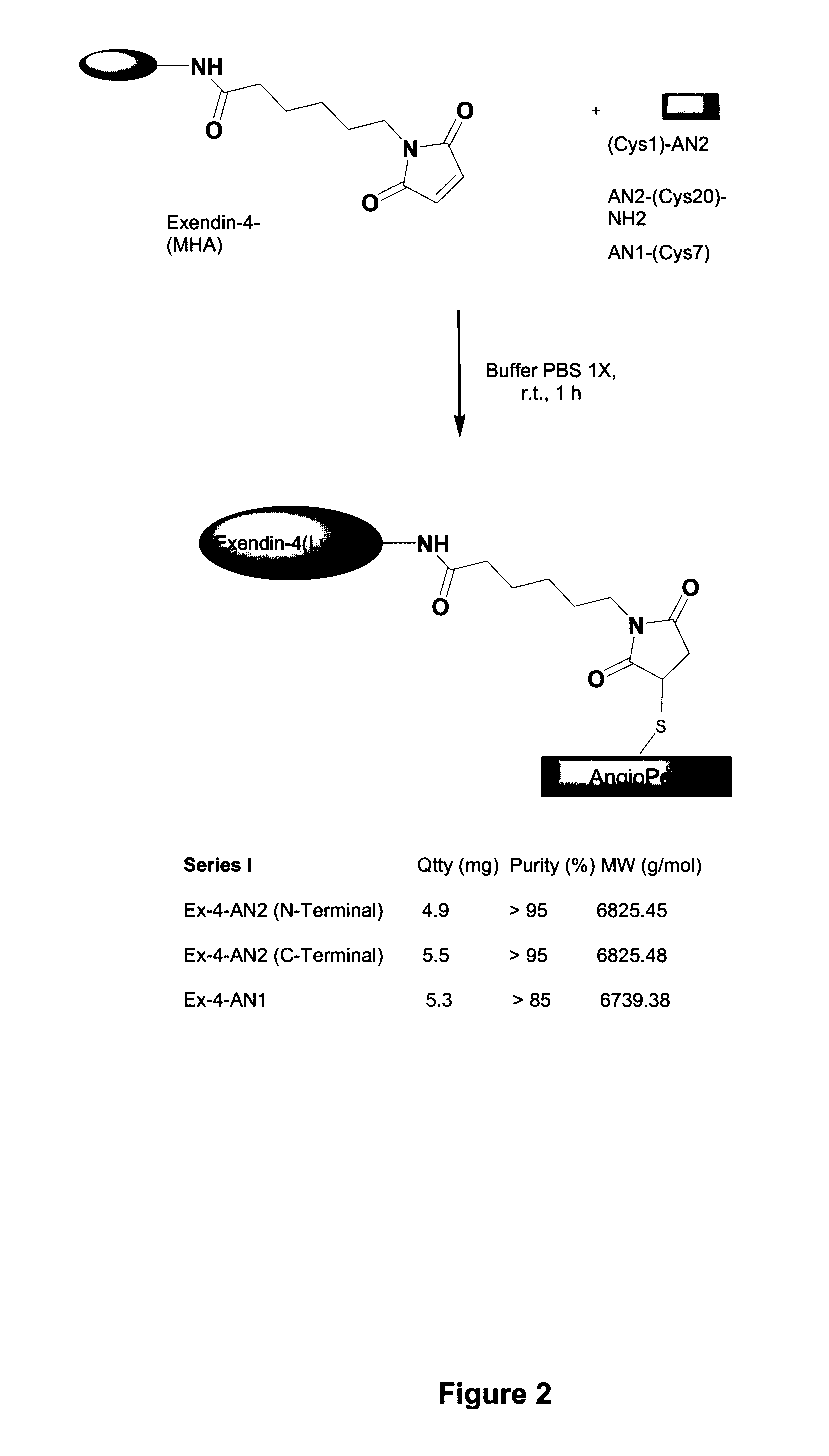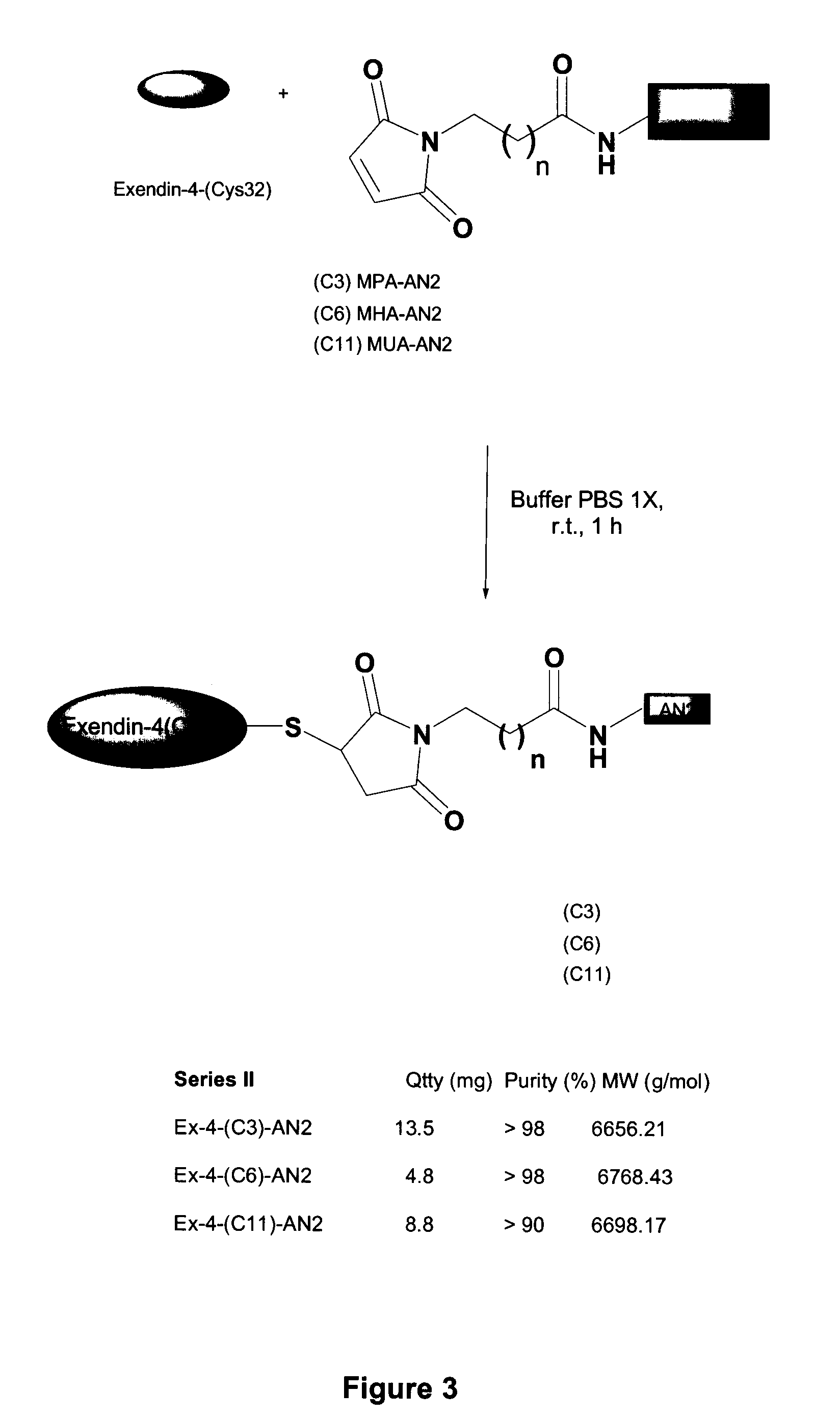Conjugates of glp-1 agonists and uses thereof
a technology of glp-1 agonist and conjugate, which is applied in the field of conjugates of glp-1 agonists and, can solve the problems of short serum half-life of insulin, limited success of strategy, and deregulation of glucose metabolism, so as to reduce the severity or incidence of side effects, improve efficacy, and improve the effect of
- Summary
- Abstract
- Description
- Claims
- Application Information
AI Technical Summary
Benefits of technology
Problems solved by technology
Method used
Image
Examples
example 1
Synthesizing GLP-1 Agonist-Angiopep Conjugates
[0180]The exemplary GLP-1 conjugates, exendin-4-cysAn2 N-terminal, and Exendin-4-cysAn2 C-terminal, and Angiopep-1 / Exendin 4 conjugates were made by conjugating [Lys(maleimido hexanoic acid)39]exendin-4 to the sulfide in cys-An2 (SEQ ID NO:113), in An2-cys (SEQ ID NO:114), or in Angiopep-1 (SEQ ID NO:67) in 1×PBS buffer for 1 hour. This resulted in production of exendin-4 / Angiopep conjugates, as shown in FIG. 2.
[0181]A second set of exendin-4 / Angiopep conjugates was made by reacting Angiopep-2 having maleimido propionic acid (MPA), maleimido hexanoic acid (MHA), or maleimido undecanoic acid (MUA) bound to its N-terminus with [Cys32]Exendin-4 to form a conjugate, as shown in FIG. 3.
example 2
Brain Uptake of Exendin-4 / Angiopep-2 Conjugates In Situ
[0182]To measure brain uptake of the exendin-4 / Angiopep-2 conjugates, we used an in situ perfusion assay. The assay, which is described in U.S. patent application Publication No. 2006 / 0189515, is performed as follows. The uptake of labeled exendin-4 and the exendin-4 / Angiopep-2 conjugates was measured using the in situ brain perfusion method adapted in our laboratory for the study of drug uptake in the mouse brain (Dagenais et al., J Cereb Blood Flow Metab. 20:381-6, 2000; Cisternino et al., Pharm Res 18, 183-190, 2001). Briefly, the right common carotid artery of mice anesthetized with ketamine / xylazine (140 / 8 mg / kg i.p.) was exposed and ligated at the level of the bifurcation of the common carotid, rostral to the occipital artery. The common carotid was then catheterized rostrally with polyethylene tubing filled with heparin (25 U / ml) and mounted on a 26-gauge needle. The syringe containing the perfusion fluid ([125I]-proteins...
example 3
Treatment of Obese Mice with Exendin-4 / Angiopep-2 Conjugates
[0184]Obese mice (ob / ob mice) were administered the [Lys39-MHA]exendin-4 / Angiopep-2-Cys-NH2 conjugate (Exen-An2).
In Vivo Study to Determine the Efficacy of Exendin-4-Angiopep-2 Conjugate
[0185]
DoseDoseDosemice / Q1D × 28 daysGroups(μg / kg)(nmol / kg)(μg / mouse)group(Total amount μg)Control00050Exendin-430.720.18520.16307.21.85201.6Exen-An24.80.720.288532.256487.22.885322.56
[0186]A 1.6 μg / kg dose of Exen-An2 is equivalent to a 1 μg / kg dose of exendin-4. The body weight of each mouse was measured daily. Food intake was estimated based on the mean values for each group, and glycemia was measured one hour following treatment. After 10 days of treatment, body weight gain and food intake of mice treated at the higher doses of either exendin-4 or the conjugate are lower than the control (FIG. 5). Food intake was also reduced in the mice receiving the higher doses of either exendin-4 or the conjugate (FIG. 6) as compared to the control.
[0...
PUM
| Property | Measurement | Unit |
|---|---|---|
| structure | aaaaa | aaaaa |
| nucleic acid | aaaaa | aaaaa |
| metabolic disorder | aaaaa | aaaaa |
Abstract
Description
Claims
Application Information
 Login to View More
Login to View More - R&D
- Intellectual Property
- Life Sciences
- Materials
- Tech Scout
- Unparalleled Data Quality
- Higher Quality Content
- 60% Fewer Hallucinations
Browse by: Latest US Patents, China's latest patents, Technical Efficacy Thesaurus, Application Domain, Technology Topic, Popular Technical Reports.
© 2025 PatSnap. All rights reserved.Legal|Privacy policy|Modern Slavery Act Transparency Statement|Sitemap|About US| Contact US: help@patsnap.com



